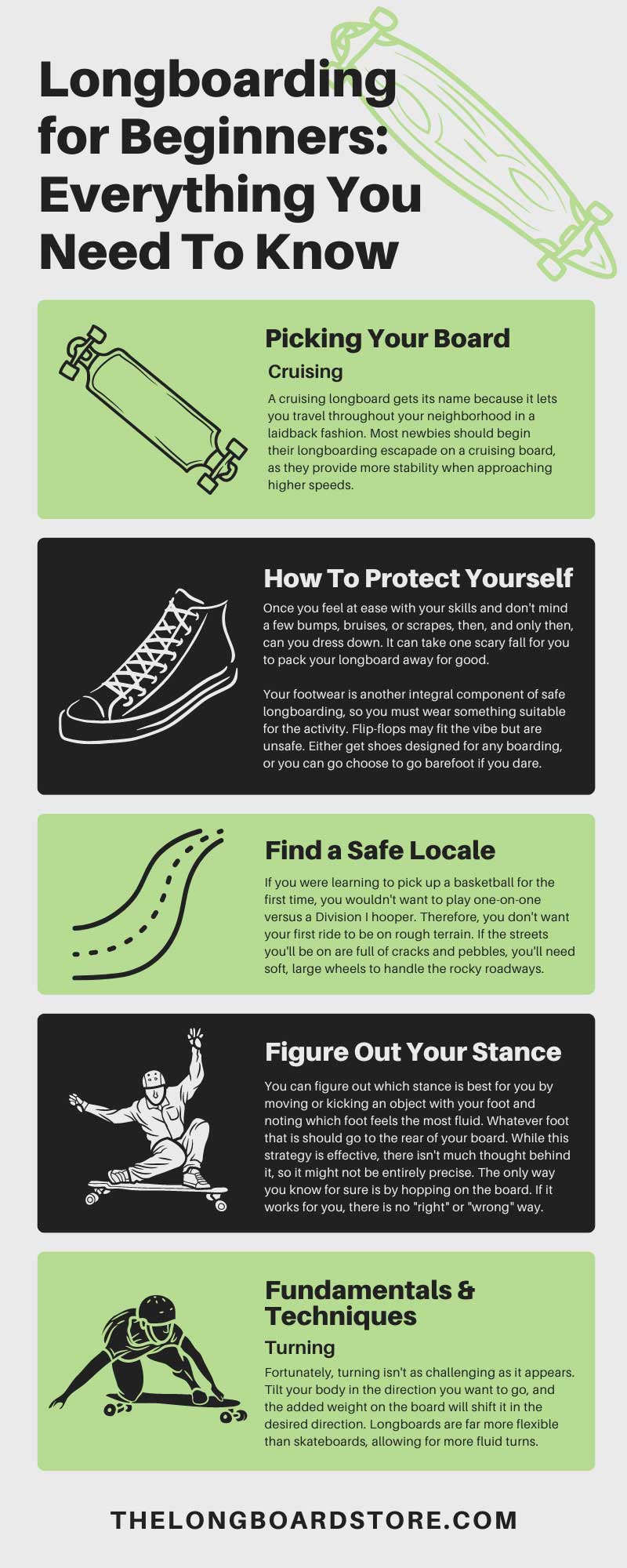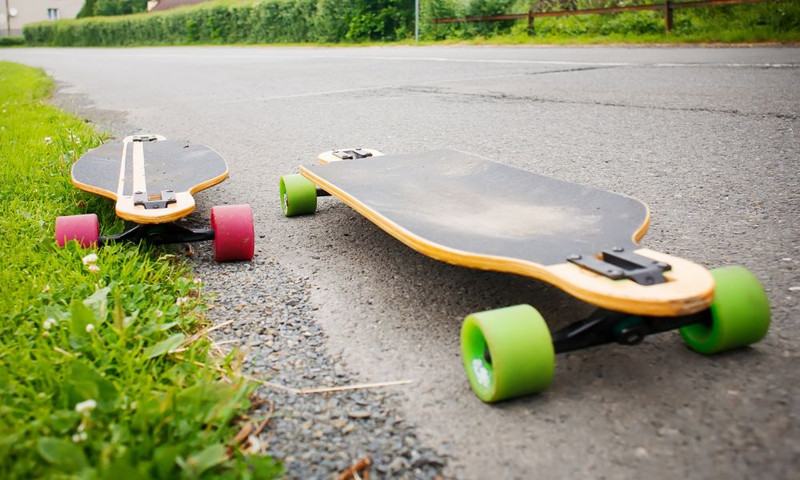Passion for the sport of longboarding continues to skyrocket all over the country. Thus, more and more people want to join in on the fun but may not know where to start. Understanding what to look for in a board and what you should learn first will help get you on the right track. Here is everything you need to know about longboarding for beginners.
Picking Your Board
Cruising
A cruising longboard gets its name because it lets you travel throughout your neighborhood in a laidback fashion. Most newbies should begin their longboarding escapade on a cruising board, as they provide more stability when approaching higher speeds.
To start, you should consider a larger board over 30 inches long and around 9 inches wide. Selecting a cruising board with these dimensions helps you get accustomed to the feel of the board with some added space for your comfort and safety.
Freestyle
The freestyle version is the next step up the longboard ladder because they are also friendly for novices. Typically, these decks are large and broad, making them easier to balance.
It is also customary for these decks to have drop-through trucks that look like a platypus. The drop-through configuration lowers the deck, making it more secure for a smoother ride.
Downhill
You should avoid a downhill board if you have little to no experience. Even the most skilled longboarders need hours of practice before attempting a downhill ride. But it's vital you know the numerous types of longboards, so you know that you can bypass this type until you feel comfortable.
Freeride
In terms of riding style, a freeride board is as if a freestyle and downhill merged together. And like the downhill longboard, it's best to leave this one behind if you’re a rookie, although freeride longboards are often more user-friendly than downhill boards. They feature robust grip tape to assist you in maintaining control while sliding. They also have tougher, smaller wheels for better slipping.
How To Protect Yourself
In addition to the board, we highly recommend having a helmet, elbow, and knee protection. Some activities down the road may let you ditch some of the protective gear, but there will be many tumbles when you first ride.
Once you feel at ease with your skills and don't mind a few bumps, bruises, or scrapes, then, and only then, can you dress down. It can take one scary fall for you to pack your longboard away for good.
Your footwear is another integral component of safe longboarding, so you must wear something suitable for the activity. Flip-flops may fit the vibe but are unsafe. Either get shoes designed for any boarding, or you can go choose to go barefoot if you dare.
Find a Safe Locale
If you were learning to pick up a basketball for the first time, you wouldn't want to play one-on-one versus a Division I hooper. Therefore, you don't want your first ride to be on rough terrain. If the streets you'll be on are full of cracks and pebbles, you'll need soft, large wheels to handle the rocky roadways.
Huge, soft wheels are more versatile and should roll more easily over rugged terrain since they flex and absorb shock. Harder wheels have a greater likelihood of seizing and causing you to fall off your longboard. Hard wheels are useful on well-kept parks and maintained tracks.
Figure Out Your Stance
Now that you have the essential gear and are in a remote, boarding-friendly environment, it's time to figure out how to stand. You must ensure that your posture is correct. As with every board sport, there are two distinctive stance types: normal and goofy. The right foot is behind the left, while the left is in front in a standard stance. The left foot is behind the right, while the right is in front in a goofy posture.
You can figure out which stance is best for you by moving or kicking an object with your foot and noting which foot feels the most fluid. Whatever foot that is should go to the rear of your board. While this strategy is effective, there isn't much thought behind it, so it might not be entirely precise. The only way you know for sure is by hopping on the board. If it works for you, there is no "right" or "wrong" way.
Fundamentals & Techniques
Turning
It might be intimidating to try something new, particularly if it takes some time to stand on your longboard. However, it's imperative to learn how to take turns safely.
Fortunately, turning isn't as challenging as it appears. Tilt your body in the direction you want to go, and the added weight on the board will shift it in the desired direction. Longboards are far more flexible than skateboards, allowing for more fluid turns.
Carving
Once you feel comfortable with turning, you can give carving a go. Carving is an enjoyable activity, and it is also essential for controlling your speed. Move your weight to the toe side and shift it back to the heel side to carve. As you go, continuously shift your weight as if writing an "S" on the pavement. If you can master this, you will feel in total control as you ride.
Braking
Turning and carving throughout a neighborhood requires you to master another ability—braking.
Using the brakes effectively can throw some novices for a loop, especially when you've been harnessing all your energy on how to move forward. But there are some tips you can use to make braking a simple process.
Stay in the same posture as if you were trying to push yourself; lean on the foot that is upright and raise the other foot off the back. Next, graze your foot lightly on the ground. If you are gentle, the brake will function properly. If you brake too forcefully, you may lose your footing or even topple off the board.
It would help if you practiced on a level surface. Yet, you will want to test your abilities as you gain confidence. For this, picking a little slope that falls and rises is ideal so that the ascent organically slows you down.
That's everything you need to know if you are a longboard beginner. The Longboard Store is your one-stop-shop for everything longboarding to start your new venture. You'll want to check out our fine selection of cruising longboards, so the growing pains of learning how to ride are minimal. No matter what you select, you will get free shipping, and we won't charge sales tax to anyone in the USA!


